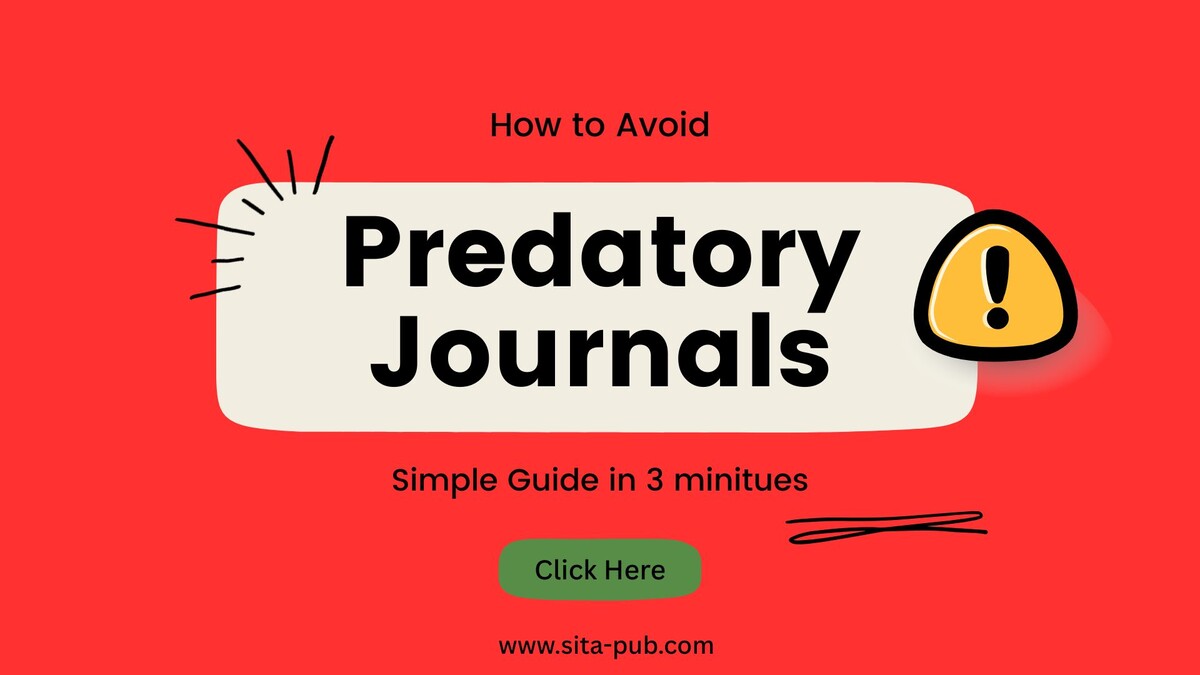Predatory Journal or Not? Check Scopus Indexing in 3 Minutes


As a PhD student or researcher, publishing your work in reputable journals, especially those indexed in Scopus, is a crucial step towards academic recognition. However, with so many journals out there, it’s easy to come across suspicious ones that might not be as legitimate as they seem. These journals often promise fast publication and high visibility, but they could be predatory, exploiting authors for financial gain without providing proper editorial or peer review services.
So, how can you quickly tell if a journal is reputable or predatory? Based on the recent article "Predatory Journals: What They Are and How to Avoid Them" by Susan A. Elmore and Eleanor H. Weston published on PubMed, here are some common characteristics of predatory journals that you can look out for:
False Peer Review Claims: These journals advertise that they are peer-reviewed but fail to provide the promised level of peer review. Some may use generic templates for peer review reports, without real evaluation of the manuscript. |
Unverifiable Impact Factor: Predatory journals often advertise an Impact Factor or other citation metrics that cannot be verified or are outright false. |
Unrealistic Publication Timelines: These journals may promise to publish articles in an unreasonably short time frame, which is often a sign of low editorial standards. |
Accepting All Articles for an APC: Many predatory journals will accept any article as long as the author pays an Article Processing Charge (APC). These journals may publish low-quality or irrelevant content, sometimes without proper subject matter expertise. |
Grammatical Errors: Articles in predatory journals often contain many grammar mistakes and lack thorough copyediting, making them look unprofessional. |
Fake or Unqualified Editorial Boards: The editorial boards of these journals may include people who either don’t exist or lack the necessary credentials and affiliations. In some cases, real academics may be listed without their consent. |
Imitating Well-Known Journals: Predatory journals often mimic the names and websites of established, reputable journals to confuse authors into submitting their work. |
Aggressive Solicitation: Predatory journals frequently target authors through unsolicited emails, encouraging them to submit their work for publication. |
Fake Contact Information: These journals may list offices in one country, but the contact details or the actual location might be in another country, raising suspicions about their legitimacy. |
Lack of Transparency: Authors may not be aware of the full publication fees until after their article is accepted. Some journals also require authors to give up copyright at the time of submission. |
Refusal to Remove Articles: Some predatory journals publish articles before the authors sign an agreement and may refuse to remove the article even if the author withdraws it. |
Removing Articles Without Notice: Certain journals may remove articles or even entire journals from the web without informing authors or giving any prior notice. |
With these red flags in mind, how can you easily verify if a journal is legitimate? Thankfully, there are quick and effective ways to check the indexing status of a journal, and one of the best methods is through Scopus and Scimago Journal & Country Rank.
To verify if a journal is indexed in Scopus, you can follow these simple steps:
Visit Scopus: Go to the official Scopus website: www.scopus.com.
Use the Search Feature: You can search for the journal using any of the following:
ISSN (International Standard Serial Number)
Publisher
Journal Title
Subject Area (for broader searches)
Check the Years Covered by Scopus: After entering the journal details, verify the years covered by Scopus. If the journal is indexed, you should see a list of years during which the journal has been covered. This ensures you’re checking a current, reputable journal and not one that’s been removed from the database.
Review the Publisher Information: Scopus will provide detailed information about the publisher. Check if it aligns with the information on the journal’s website.
Next, you can cross-check the journal on Scimago Journal & Country Rank (SJR), which provides additional metrics and insights about the journal’s impact and ranking:
Visit Scimago Journal & Country Rank: Go to https://www.scimagojr.com.
Search by Journal Title, ISSN, or Publisher: Enter the journal’s title, ISSN, or publisher name in the search bar.
Check the Quartile Ranking: Scimago provides quartile rankings (Q1, Q2, Q3, Q4), which indicate the journal’s standing in its subject area. Q1 journals are considered the most prestigious, while Q4 journals are lower-ranked.
When evaluating a journal, here are some key metrics you can easily check through Scopus and Scimago to get a clearer idea of its credibility and reputation:
CiteScore
SJR (SCImago Journal Rank)
SNIP (Source-Normalized Impact per Paper)
SJR
H-Index:
Let’s take a look at The Lancet, a highly respected journal in the medical field:
Publisher: Elsevier
ISSN: 0140-6736, E-ISSN: 1474-547X
Subject Area: Medicine, General Medicine
When you check this journal in Scopus and Scimago, you’ll find:
CiteScore 2023: 148.1
SJR 2023: 12.113
SNIP 2023: 23.150
SJR 2024: 12.113 (Q1)
H-Index: 936
These metrics show that The Lancet is a high-impact, reputable journal with rigorous editorial and peer review standards, placing it in the Q1 quartile.
If you're looking for more insights on academic writing, publishing strategies, and tips to navigate the complex world of scholarly articles, our weblog has a wealth of resources to guide you through every step of your publication journey. From choosing the right journal to understanding Article Processing Charges (APCs) and mastering the peer review process, we cover it all.
Visit our weblog regularly for expert advice, actionable tips, and in-depth articles that can help you elevate your academic writing and increase your chances of getting published in high-impact journals.
Stay informed, stay ahead, and let us help you succeed in your research endeavors!
If you have any questions, inquiries, or would like to learn more about our services, please don't hesitate to reach out to us. Our dedicated team is ready to assist you.